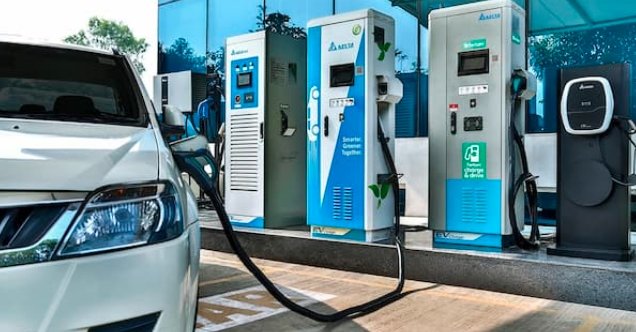The Scottish Government has awarded over £3 million to expand electric vehicle charging points in north-west Scotland. This funding, led by HITRANS and local councils, aims to boost access in remote areas like Argyll and Bute, Orkney, Shetland, and the Western Isles, supporting the nation’s push toward net zero emissions by 2045.
Key Details of the New Funding
This fresh investment comes from the Electric Vehicle Infrastructure Fund, which focuses on drawing private sector money into public charging networks. The project targets rural and island spots where building chargers is less profitable for businesses alone.
Officials expect the £3 million to unlock even more private cash, leading to new charging stations that help drivers in hard-to-reach places. This move builds on Scotland’s strong track record in green transport.
The funding was announced recently, aligning with growing demand for electric vehicles across the country. It addresses concerns about range anxiety in remote regions, where long distances between towns make reliable charging vital.

How It Fits into Scotland’s EV Goals
Scotland has made big strides in electric vehicle support. Since 2011, the government has poured over £65 million into public charging spots, creating one of the UK’s best networks.
Today, the country boasts more than 7,000 public charge points. That number hit a key target of 6,000 in October 2024, two years ahead of plan.
The latest funding is part of a larger vision to add about 24,000 more public chargers by 2030. This will help phase out new petrol and diesel cars by that year.
Recent stats show ultra-low emission vehicles in Scotland jumped 20% from 2022 to 2023. With incentives like loans for used electric cars and taxis, more people are switching.
In 2025-26, the government plans over £20 million for such loans, targeting lower-income households and businesses.
Benefits for Rural and Island Communities
People in north-west Scotland often face tough travel conditions. This funding will install chargers in key spots, making electric vehicles a real option for locals and visitors.
For example, islands like Orkney and Shetland rely on ferries and limited roads. New chargers could cut emissions from transport, which is a big pollution source there.
Businesses stand to gain too. Tourists with electric cars will feel more confident visiting, boosting local economies.
- Improved access: Chargers in remote areas reduce worries about running out of power on long drives.
- Green jobs: Building and maintaining stations could create work in construction and tech.
- Community support: Funds target spots where private firms hesitate, ensuring no one gets left behind.
This approach helps bridge the gap between urban and rural Scotland in the shift to clean energy.
Experts say such investments are crucial for fair transition. Without them, remote areas might lag in adopting electric vehicles.
Challenges and Solutions Ahead
Expanding chargers is not without hurdles. High costs in rural zones and grid connections pose issues.
The government tackles this by partnering with private firms. The £3 million is expected to pull in at least matching private funds, spreading the load.
Power supply is another focus. Plans include upgrading networks to handle more electric vehicles.
A draft plan from late 2024 outlines 15 actions for growth. It calls for teamwork among government, businesses, and energy providers.
| Aspect | Current Status | Future Target |
|---|---|---|
| Public Charge Points | Over 7,000 | 24,000 by 2030 |
| Government Funding Since 2011 | £65 million+ | Additional £30 million fund |
| EV Uptake Growth | 20% increase 2022-2023 | Phase out petrol/diesel by 2030 |
| Rural Focus Areas | North-west regions | Expanded networks in islands |
This table shows the progress and goals, highlighting the role of targeted funding.
Ongoing consultations will shape the final plan, set for release later in 2025.
Looking to the Future
Scotland’s efforts tie into global trends. Countries worldwide ramp up electric vehicle infrastructure to fight climate change.
Recent events, like the 2025 push for carbon capture and electric buses, show a joined-up approach. Over £41 million went to 252 new electric buses and a nationwide charging network for heavy vehicles.
With electric vehicles becoming cheaper and more common, these investments prepare the ground.
What do you think about this funding boost? Share your views in the comments and spread the word to help raise awareness about Scotland’s green transport push.


















